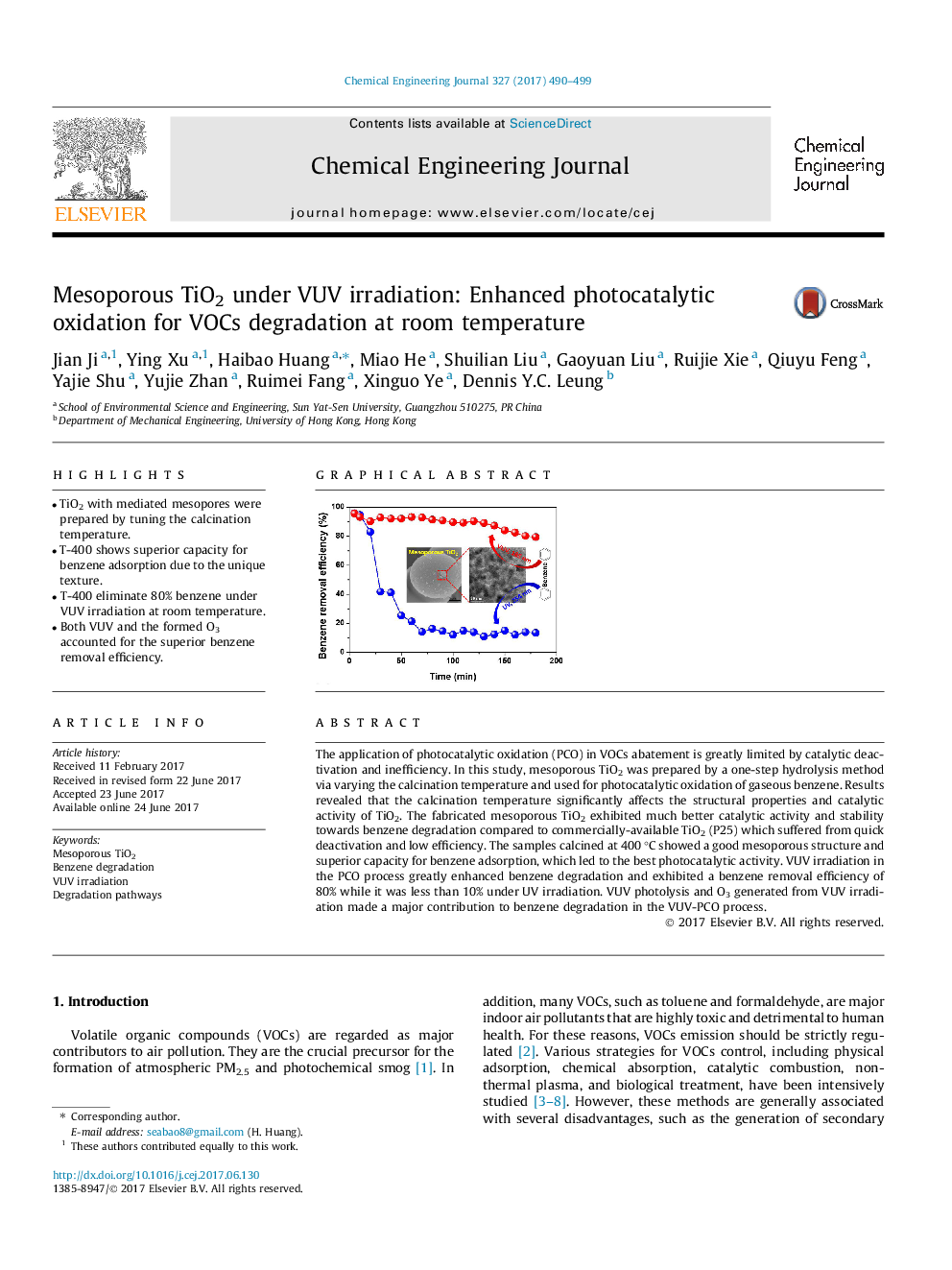| Article ID | Journal | Published Year | Pages | File Type |
|---|---|---|---|---|
| 6465044 | Chemical Engineering Journal | 2017 | 10 Pages |
â¢TiO2 with mediated mesopores were prepared by tuning the calcination temperature.â¢T-400 shows superior capacity for benzene adsorption due to the unique texture.â¢T-400 eliminate 80% benzene under VUV irradiation at room temperature.â¢Both VUV and the formed O3 accounted for the superior benzene removal efficiency.
The application of photocatalytic oxidation (PCO) in VOCs abatement is greatly limited by catalytic deactivation and inefficiency. In this study, mesoporous TiO2 was prepared by a one-step hydrolysis method via varying the calcination temperature and used for photocatalytic oxidation of gaseous benzene. Results revealed that the calcination temperature significantly affects the structural properties and catalytic activity of TiO2. The fabricated mesoporous TiO2 exhibited much better catalytic activity and stability towards benzene degradation compared to commercially-available TiO2 (P25) which suffered from quick deactivation and low efficiency. The samples calcined at 400 °C showed a good mesoporous structure and superior capacity for benzene adsorption, which led to the best photocatalytic activity. VUV irradiation in the PCO process greatly enhanced benzene degradation and exhibited a benzene removal efficiency of 80% while it was less than 10% under UV irradiation. VUV photolysis and O3 generated from VUV irradiation made a major contribution to benzene degradation in the VUV-PCO process.
Graphical abstractDownload high-res image (62KB)Download full-size image
